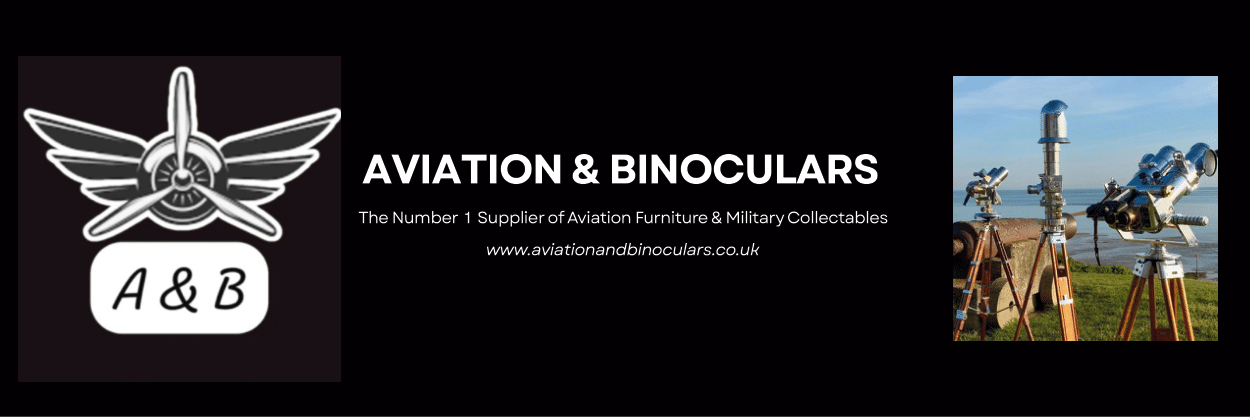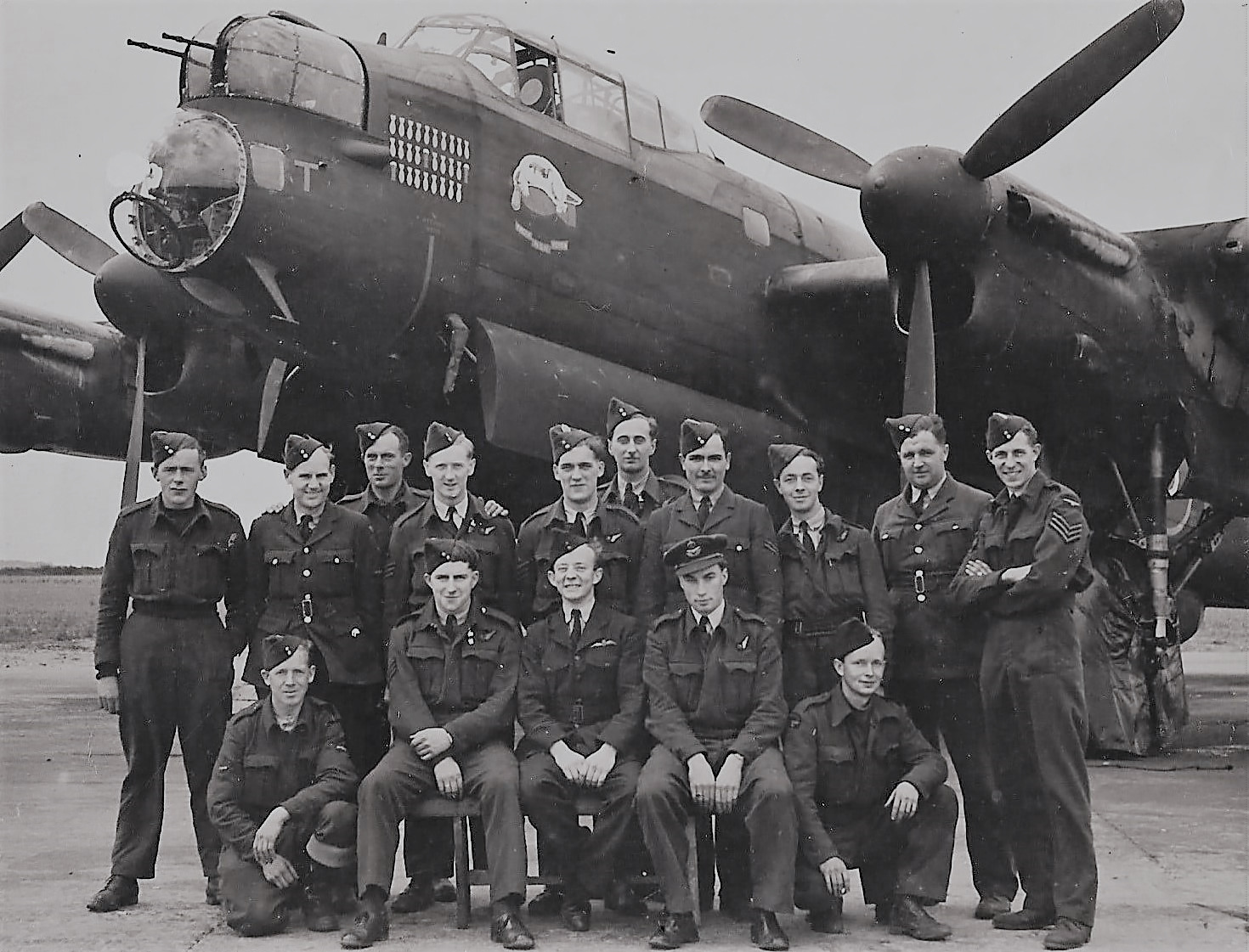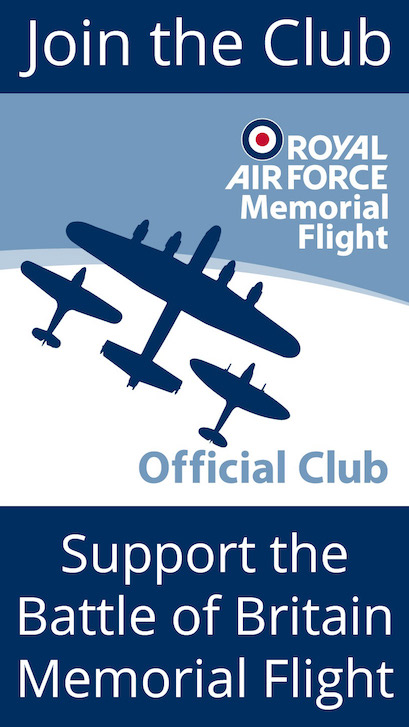Members Remember: Warrant Officer Jack Wainwright – Lancaster bomb aimer
Header Image: The crew of Plt Off Bill Young RAAF (front centre) with their groundcrew, in front of their 44 (Rhodesia) Sqn Lancaster ME699 ‘KM-T’ for “Tommy”, in which they flew 21 ‘ops’ before being shot down in July 1944. The crew evidently had a close relationship with their groundcrew, many of whom were Rhodesian. Bomb aimer Flt Sgt John ‘Jack’ Wainwright is fourth from the left in the middle row. The Lancaster’s nose art is apparently a duckbilled platypus riding a bomb and a Latin inscription which translates “Deeds Not Words”
Continuing the ‘Members Remember’ series, in which we offer Club members the opportunity to tell the stories of any relatives who served with the RAF during the Second World War, here we have the story of Lancaster bomb aimer Flight Sergeant (later Warrant Officer) John ‘Jack’ Wainwright, father of Club member Mike Wainwright. Mike has done a considerable amount of research into his father’s service in the Royal Air Force during the Second World War and has set up a website here dedicated to him and his colleagues.
John, always known as ‘Jack’, Wainwright, the son of a miner from a village near Wakefield, Yorkshire, joined the RAF as soon as he was old enough in July 1941. Put on reserve, he was called forward in February 1942 and entered training as a pilot, but failed to make the grade, so he remustered as a bomb aimer in August 1942. Jack's RAF record shows a series of postings to various training units through 1942 and 1943, including six months spent in South Africa where he also attended an Air Navigation course. In September 1943 Jack was posted to 82 Operational Training Unit at Ossington where he joined the crew of an Australian pilot, Sergeant (later Flying Officer) William ‘Bill’ Young, for training as a night bomber crew on Vickers Wellingtons. At the Heavy Conversion Unit at Stradishall in February 1944 the five crewmen were joined by flight engineer Sergeant Bill Robinson and Canadian mid-upper gunner Sergeant (later Flight Sergeant) Bill Rennie. After completing the Lancaster conversion course at the Lancaster Finishing School at Swinderby, the crew were posted to join 44 (Rhodesia) Squadron at Dunholme Lodge on 24th March 1944.
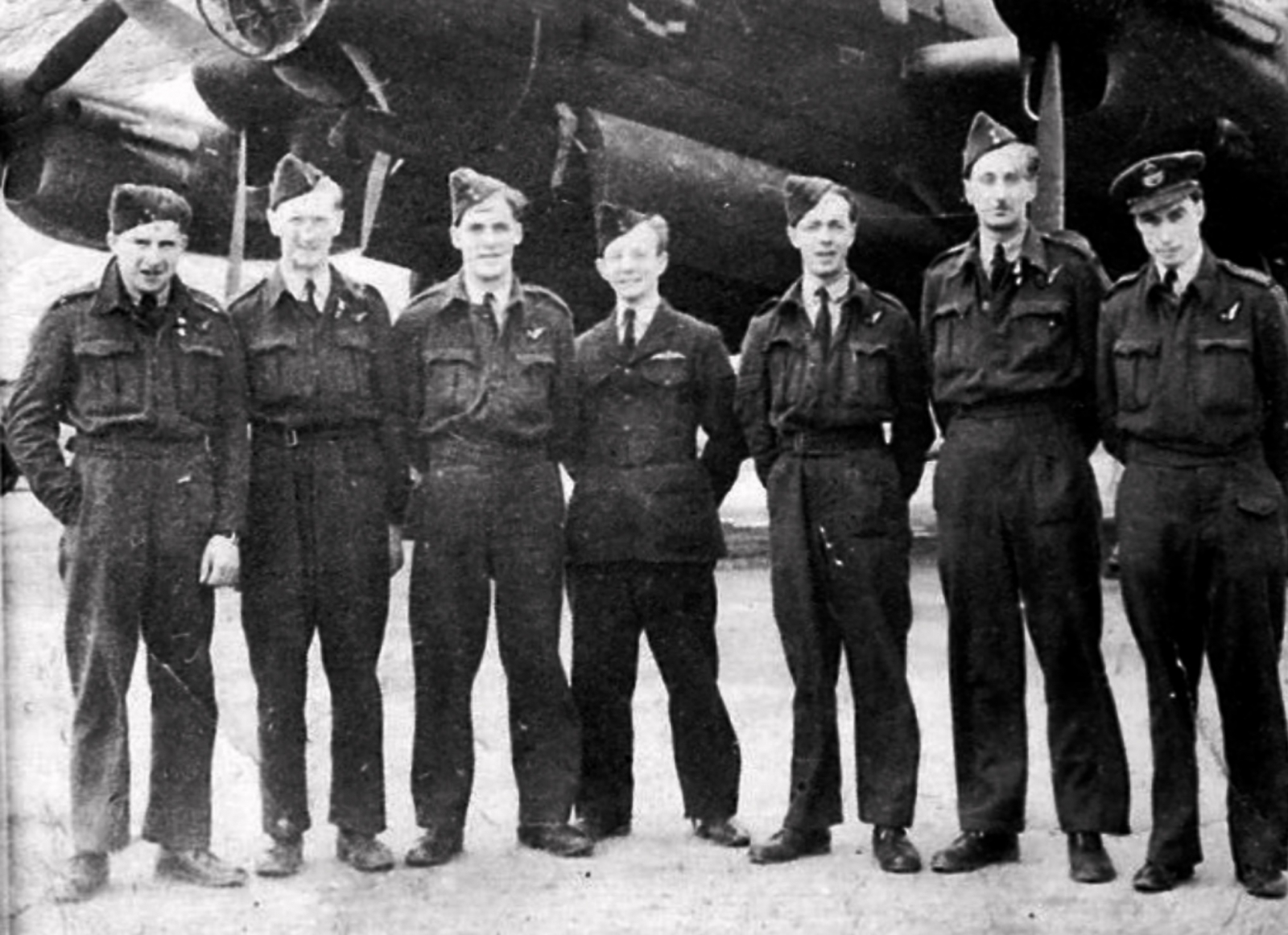
The pilot and navigator each flew on an operation with an experienced crew before the novice crew flew their first ‘op’ together. This was the infamous Nuremberg raid of 30th March 1944 when Bomber Command lost 95 aircraft, 11.9 percent of the force, on a clear bright moonlit night that favoured the enemy night fighters. The crew’s aircraft was hit by incendiaries dropped from above and they were attacked by a Junkers Ju 88 night-fighter, but they got home safely from this baptism of fire. Over the following three months they flew regularly, always in Lancaster B.1 ME699 ‘KM-T’ for “Tommy”, mainly bombing targets in France, paving the way for the Allied invasion in June 1944. The 21 ‘ops’ flown by the crew included the disastrous raid against the German tank barracks at Mailly-le-Camp on the night of 3rd-4th May 1944, in which over 11 percent of the attacking force were lost, and also the raid against a synthetic oil plant in Wesseling, near Cologne on the Ruhr, on the night of 21st June 1944. Six of the 16 Lancasters from 44 Squadron sent on this raid failed to return and altogether 37 were lost from 133 dispatched, 28.7 percent of the force; by far the highest percentage loss on a single raid by Bomber Command after February 1942.
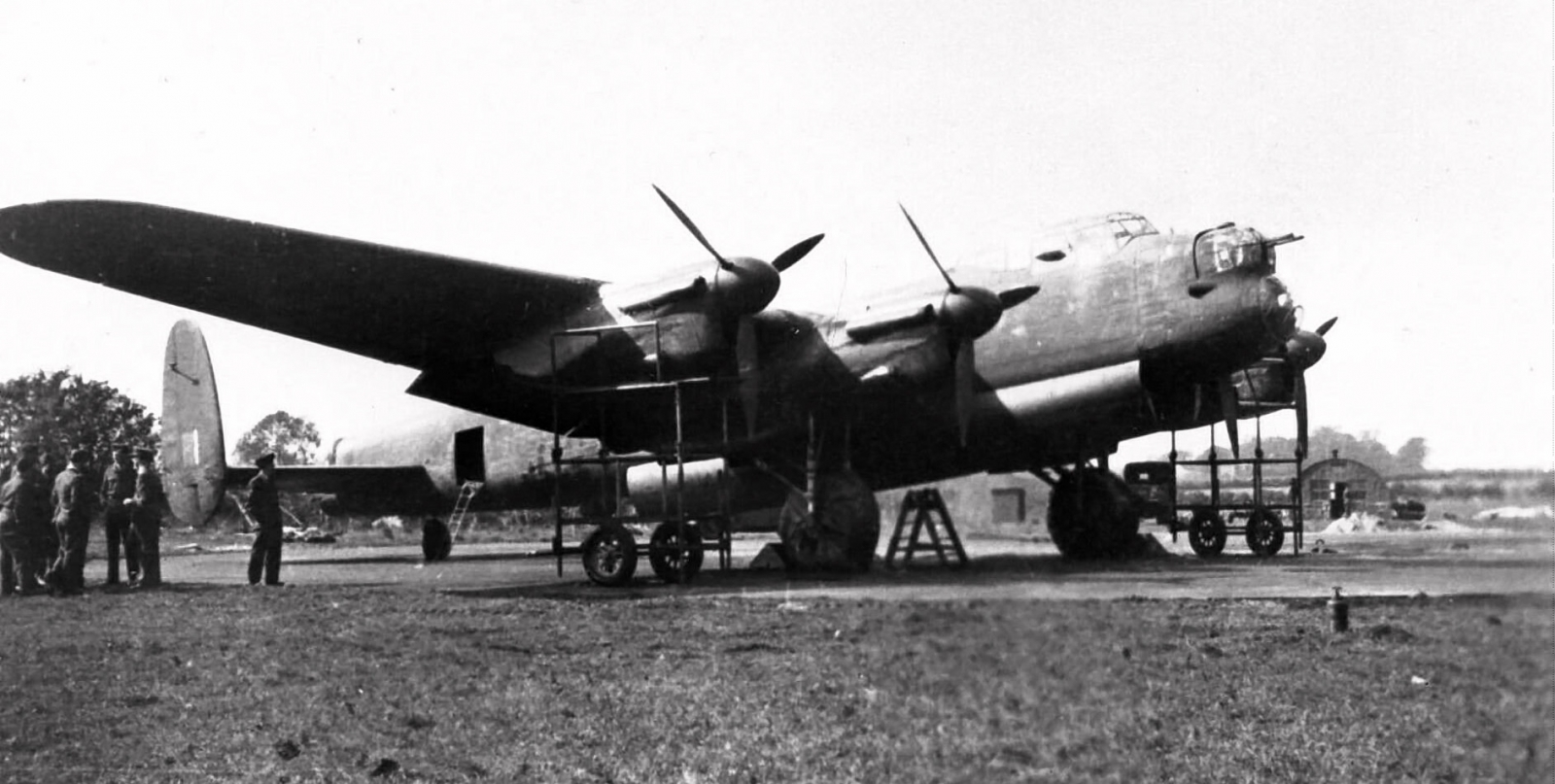
Although their aircraft was damaged three times, Jack’s crew returned safely from all of these ‘ops’, but their luck was to run out on the night of 4-5th July 1944 during a bombing raid against a V-1 ‘flying bomb’ storage and assembly depot in caves at St Leu d'Esserent, France. Their regular rear gunner, Bob Routledge, was taken ill just before the mission and was replaced by air gunner Sergeant Ronald Houseman, for whom this was only his third ‘op’. They also had a second navigator on board, Flying Officer Harold Braathen RCAF, new to the squadron and there as a “passenger” to fly on an ‘op’ with an experienced crew before doing so with his own. After dropping its load of 1,000-lb bombs on the target, Lancaster ME699 was attacked and shot down by a Me Bf 110 night-fighter, flown by Unteroffizier Günther Schlomberg of 3./NJG3. The pilot and captain, Bill Young, ordered the crew to abandon the aircraft. With the bail-out hatch located in the bomb-aimer’s compartment, Jack Wainwright was first out, followed by the flight engineer Bill Robinson. They were the only two from the crew who survived; the other six were all killed. There is some evidence that the wireless operator, Sergeant Leslie Jackson, may also have bailed out but did not survive; the other five were still in the aircraft when it crashed. The only body identified by the Germans was that of Leslie Jackson. All six of the crew who were killed are buried together in a single grave in the Marissel French National Cemetery in Beauvais.
Jack Wainwright and Bill Robinson were assisted by courageous French Resistance workers and hidden until Allied troops reached the area at the end of August 1944. Meanwhile, Jack’s family had received the dreaded telegram from the Air Ministry informing them that he was “missing as a result of air operations over enemy territory”. Back in the UK, Jack was debriefed by MI9’s ‘Intelligence School 9’ on 4th September and then given leave to go home to Wakefield. He arrived before the telegram telling his family that he was safe and well! Jack then returned to duties as an instructor until after the war had ended.
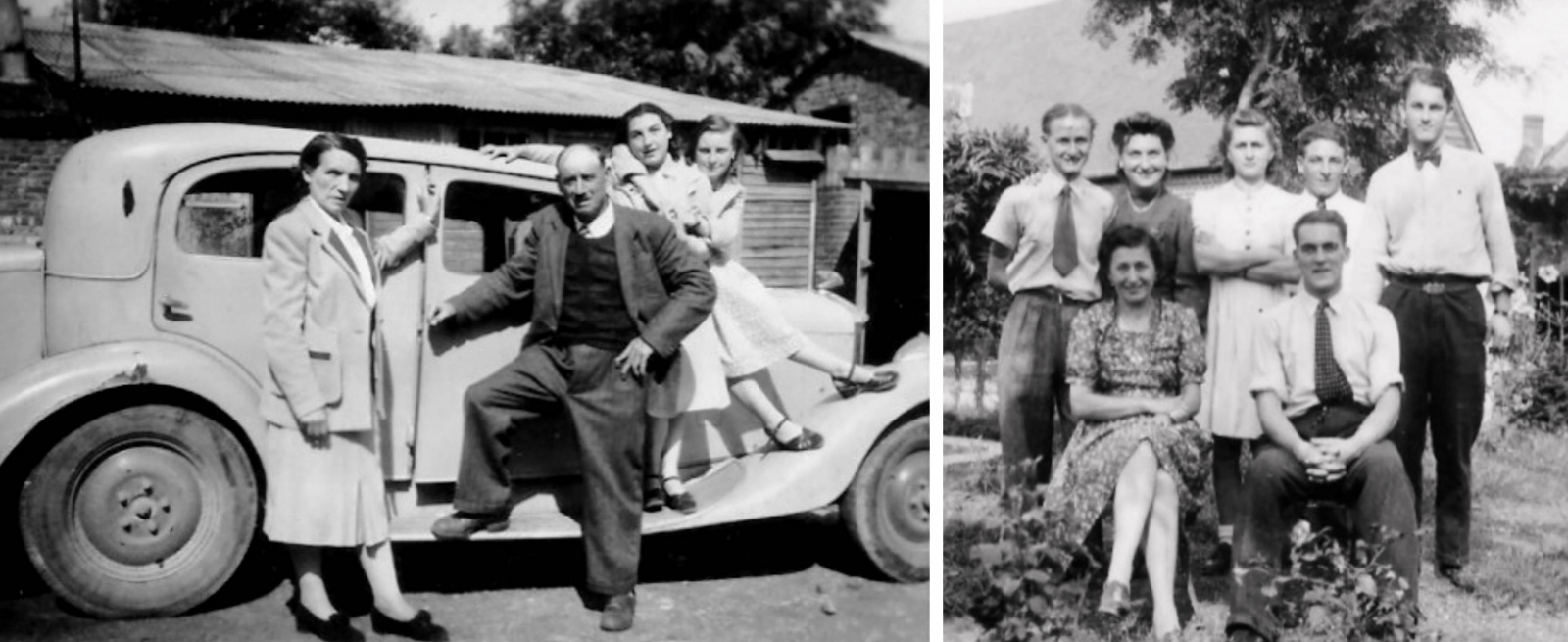
In February 1946 Jack was posted to the Far East where he served with 48 Squadron, a Dakota unit based at RAF Changi, Singapore, as an Air Quartermaster with the VIP Flight. Now promoted to Warrant Officer he was eventually released from the RAF in January 1947. Back home, in February 1947, he married fiancé Irene Sheppard, who he had met during her time in the WAAF. She had been a Telephony Operator at RAF Binbrook with 460 Squadron RAAF and later at RAF Blyton. Jack became a policeman with the Metropolitan Police. During the rest of his life he rarely talked much about his time in the RAF. Sadly, he died young from cancer – a result of his smoking habit – when his son and Club member Mike Wainwright was only 18 years old.
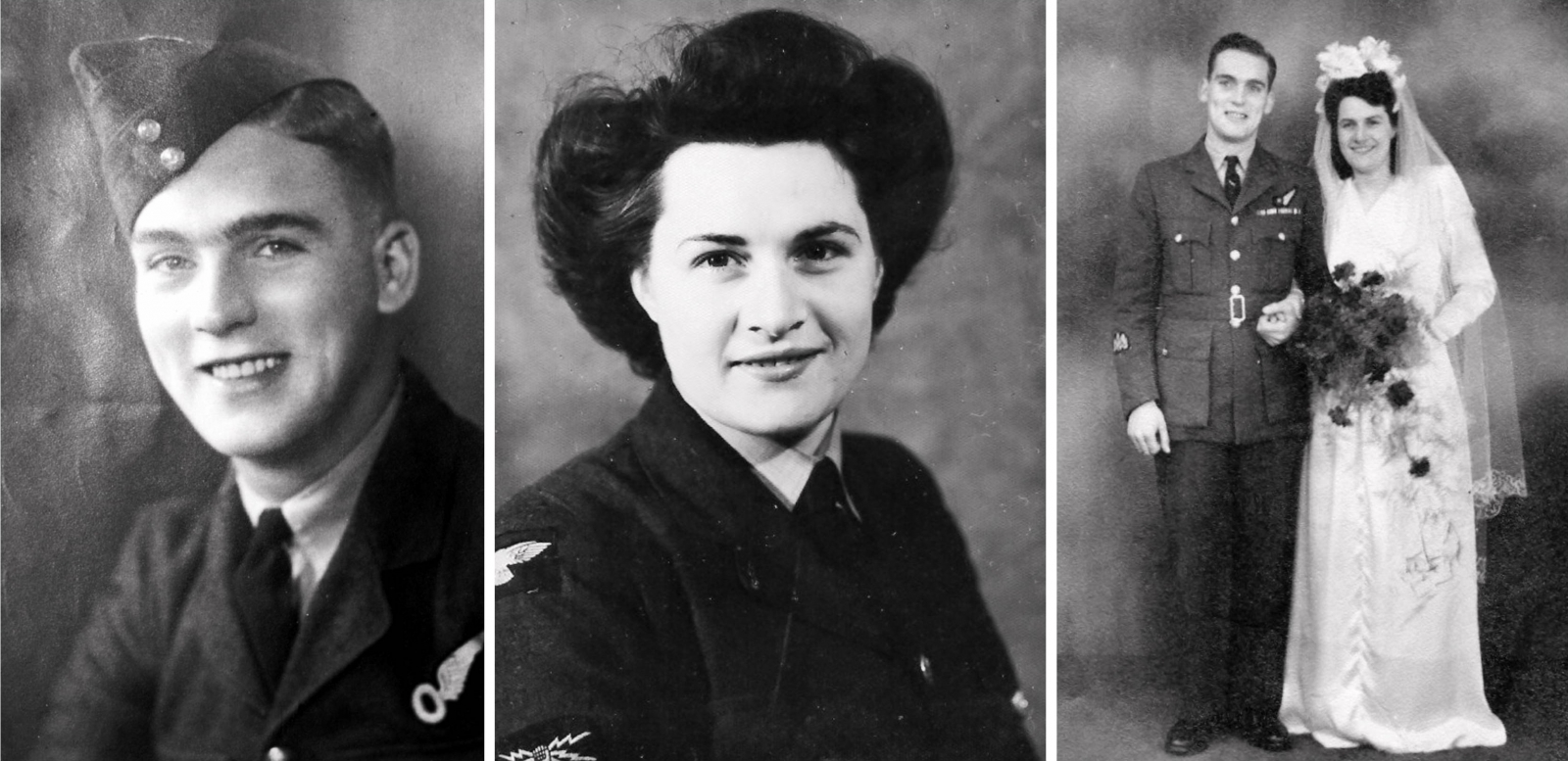
Thank you to Mike for allowing us to tell his father’s story. If any Club member would like to submit a story about a relative who served with the RAF during the Second World War for the ‘Members Remember’ series, we would be pleased to receive it. The only proviso for a story to be published in the Club newsletters is that we must have at least one photograph of the person in wartime to illustrate it. Simply email [email protected]

